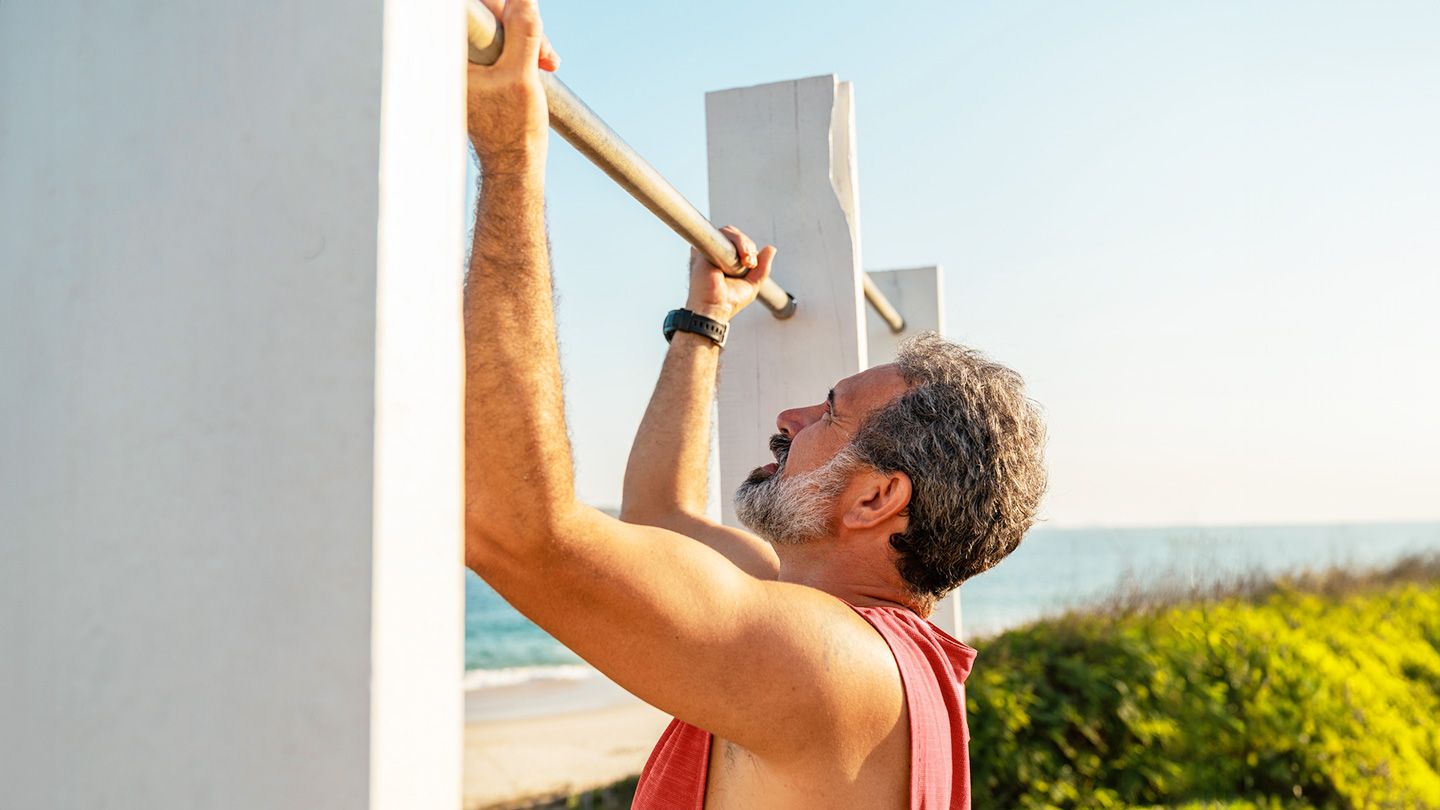Chest pain following pull-ups can stem from several causes, some of which are serious and others that should respond to simple care at home. It may indicate a muscle pull or spasm. However, it’s not always easy to distinguish between less serious chest pain and more serious causes, which can indicate trouble with your heart. If you’re in doubt about the source of chest pain after pull-ups, you should contact your physician immediately.
Chest Pain From Pull-Ups
The chest pain you feel after doing pull-ups could be related to a muscle strain. If your chest muscle seems tender when you press on a particular spot, your pain is likely due to muscle strain.
To treat muscle pain, lay off pull-ups for a few days to allow your chest muscle to heal, according to Mayo Clinic. In addition, you can treat the pain with ice or heat, along with an over-the-counter painkiller such as acetaminophen (Tylenol).
Costochondritis and Tietze Syndrome
Two conditions, costochondritis and Tietze syndrome, can cause chest pain after pull-ups, according to Mayo Clinic.
Costochondritis involves inflammation in the cartilage that connects your rib cage to your breastbone, or sternum. It can cause a dull ache, sharp pain, or a feeling of pressure. The pain usually gets worse when you move your chest wall, like when you cough, sneeze, or take a deep breath.
Tietze syndrome is when you have swelling with pain. This syndrome usually presents equally across genders in teenagers and young adults, while costochondritis is more common in women older than 40. You can treat these conditions yourself by slowing down your exercise routine for a few days to allow the inflammation to subside and by applying heat or ice according to your doctor’s instructions. Over-the-counter oral and topical pain relievers can alleviate the discomfort.
Other Causes of Chest Pain
Other potential causes of chest pain include gastroesophageal reflux disease, exercise-induced bronchospasms, anxiety, and hyperventilation, according to Cleveland Clinic. Unless you’ve experienced the exact same pain before and know what it feels like, it can be difficult or impossible to distinguish between any of these conditions, including muscle strain and joint inflammation.
Heart Attack or Angina
Although it may be more likely that your chest pain following pull-ups represents an injury or a strain, it’s also possible that you’re having a heart attack or angina, a form of chest pain that indicates heart disease, according to Harvard Health Publishing.
In fact, it’s not unusual for someone who hasn’t exercised in a long time to experience the first twinges of angina — or even a heart attack — during strenuous exercise. Physicians use a series of medical tests to distinguish between the various types of chest pain and to determine if a person needs immediate medical care for a heart problem.
If you’re not sure why you’re having chest pain following pull-ups, or if you suspect heart disease might be causing your symptoms, seek immediate medical attention.
Read the full article here




